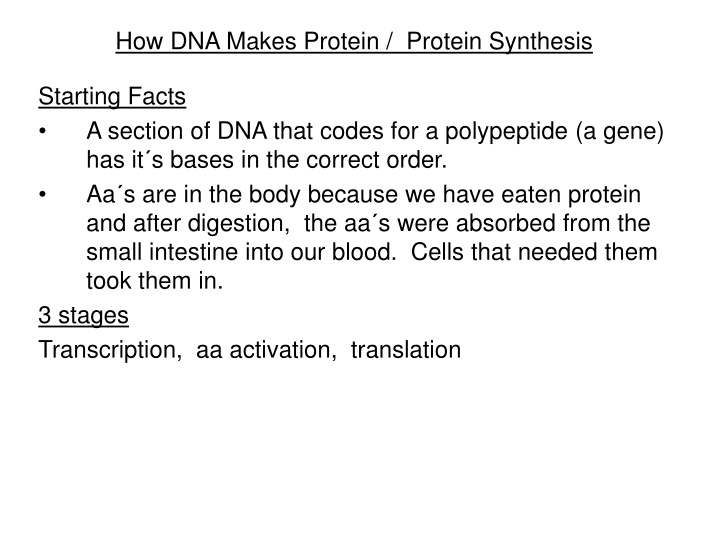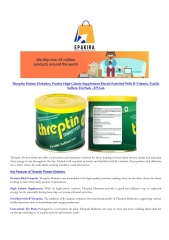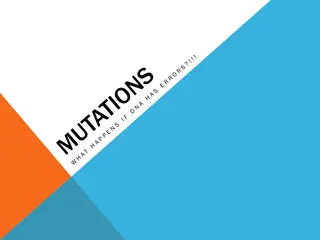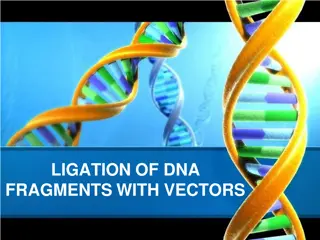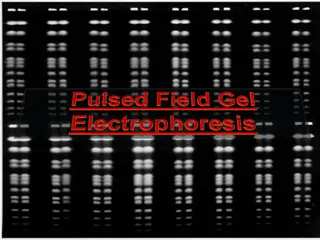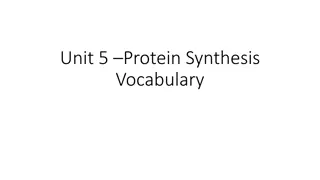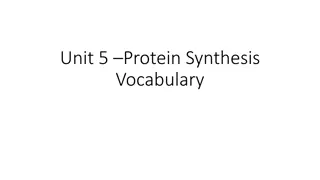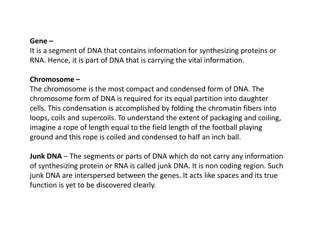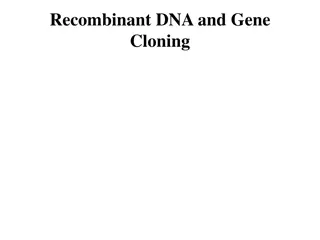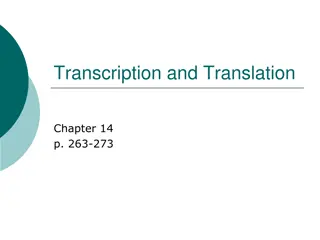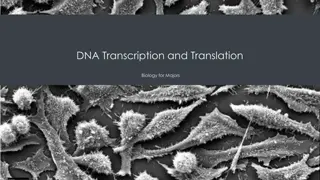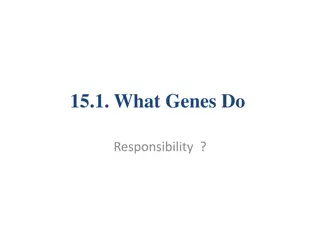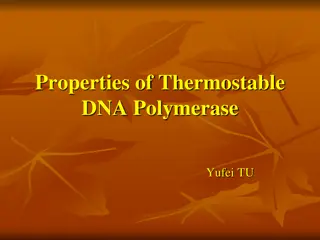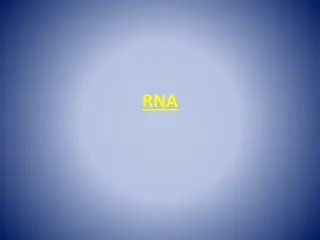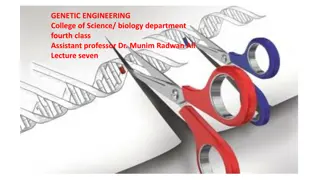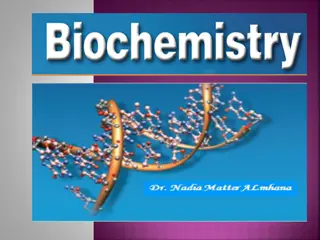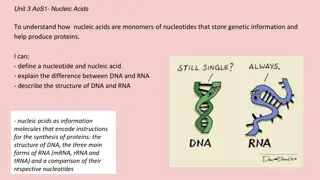DNA to Protein Synthesis Process
The process of protein synthesis starting from DNA includes transcription, translation, and activation of amino acids. DNA unwinds in the nucleus for transcription, mRNA is formed, tRNA loads correct amino acids in the cytoplasm, and ribosomes translate mRNA into a sequence of amino acids. This PowerPoint simplifies the complex process with illustrations and explanations, making it easier to understand the flow from genetic code to protein creation.
Download Presentation

Please find below an Image/Link to download the presentation.
The content on the website is provided AS IS for your information and personal use only. It may not be sold, licensed, or shared on other websites without obtaining consent from the author.If you encounter any issues during the download, it is possible that the publisher has removed the file from their server.
You are allowed to download the files provided on this website for personal or commercial use, subject to the condition that they are used lawfully. All files are the property of their respective owners.
The content on the website is provided AS IS for your information and personal use only. It may not be sold, licensed, or shared on other websites without obtaining consent from the author.
E N D
Presentation Transcript
How DNA Makes Protein / Protein Synthesis Starting Facts A section of DNA that codes for a polypeptide (a gene) has it s bases in the correct order. Aa s are in the body because we have eaten protein and after digestion, the aa s were absorbed from the small intestine into our blood. Cells that needed them took them in. 3 stages Transcription, aa activation, translation
1) The order of bases in a gene is changed into a mRNA molecule Where ? In nucleus Transcription How ? a) DNA unwinds and unzips (H bonds between complementary bases break). In the nucleus there are free mRNA bases floating around. With the help of RNA polymerase they come in and temporarily complementary base pair with the exposed DNA bases. (N.B an exposed A on the DNA will have U (uracil) pair with it). When the gene has been transcribed, the temporary H bonds break. mRNA moves away and out through the nuclear pores and into the cytoplasm. The DNA zips up and winds up (to protect itself) b) c) d)
Aa activation This is when tRNA becomes loaded /activated with it s correct aa. Where ? - in the cytoplasm How ? It s correct aa matches the 3 bases at the bottom of the tRNA, it s anticodon. This is all catalysed by a specific enzyme and ATP energy is used.
3) Translation This converts the mRNA into a line of aa s that are in the correct order. Where ? In the cytoplasm How ? a) The first 3 bases, codon, of mRNA is held by a ribosome. b) The correct tRNA, carrying the correct aa comes along and temporarily forms H bonds during complementary base pairing. c) The ribosome is also holding the second codon, it s complementary tRNA comes along and the anticodon forms H bonds with it s codon, during cbp. d) The first aa detaches from it s tRNA and goes and bonds to the 2nd aa. The ribosome moves along and this process continues until the whole mRNA has been translated. After each tRNA has left it s aa there to join the aa line, it goes away and will get activated /loaded up again with another aa that is correct.
This powerpoint was kindly donated to www.worldofteaching.com http://www.worldofteaching.com is home to over a thousand powerpoints submitted by teachers. This is a completely free site and requires no registration. Please visit and I hope it will help in your teaching. Free Powerpoint Presentations 7
